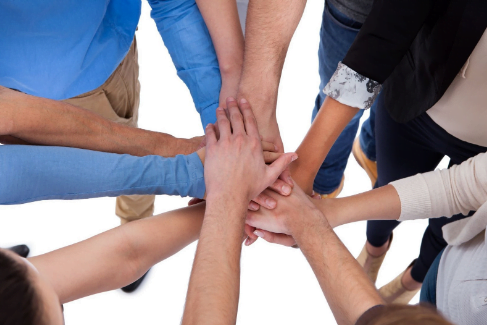
This blog serves as a great background understanding to organising team building or team bonding for your team wherever you are in Hong Kong, Singapore or South East Asia.
At first glance, many people might not realise that the terms “Team Building” and “Team Bonding” aren’t one and the same thing. We’d even dare to wager that many out there might even be seeing these two terms mentioned in the same breath for the first time here. Well, Team Building and Team Bonding are BOTH very important corporate concepts for nurturing an effective team, and it would do every team leader good to have a sufficient grasp of both concepts, and know how to build on each. So, what’s the difference?
TEAM BUILDING
In a nutshell, Team Building refers to any effort towards making your team perform more effectively, with the PRODUCTIVITY of the team as the main focus. Team Building activities generally involve participants working together as a team to achieve a particular objective or to solve a problem. Team Building activities are great for developing your team’s agility, and for enhancing the sense of synergy in working together which may go unnoticed on a daily basis, but is so important for an effective team.
Effective Team Building activities include the concept of unique individual roles coming together towards a common goal. An example of a great Team Building activity is Team Music’s BANDINC program where teams learn to play real music together as a result of performing their roles well on individual musical instruments. Achieve corporate clarity, collaboration and commitment to succeed with BANDINC! No wonder the Human Resource community embellished Team Music with 3 Awards based in Singapore, Hong Kong and United Kingdom. Not just an ordinary team building activity, read what participants say.
TEAM BONDING

Where Team Building focuses on a team’s collective productivity, the concept of Team Bonding primarily focuses on strengthening the RELATIONSHIPS within a team. A Team Building activity could very well achieve elements of Team Bonding as well, but a Team Bonding activity may not necessarily achieve the results intended for a Team Building activity. Team Bonding activities are generally, though not necessarily, simpler than Team Building activities, and could simply involve team members spending time together over karaoke or a day at the movies.
One might argue, however, that no Team Building activity could truly be effective without at least some aspect of Team Bonding – a point with which we agree. Besides simply knowing how to work with each other, good relationships within a team are key to enhancing a team’s effectiveness. Nonetheless, Team Bonding activities are more an investment in the relational aspect of a team rather than its business aspect.
Team building and team bonding are equitably valuable
The both concept sounds easy to understand but its application in the activities is pretty difficult. Both the concepts are different from each other but again interrelated due to its similar outcome. Teams need to be it of a sports group, school classes, flight crews or any other group to adopt the concept of team building and team bonding to derive perfect coordination and understanding.
Every team is developed with the members who have a common goal but might be distinctive of different thoughts and intentions. Aiming to achieve the target and conquer successfully, it is also necessary to keep an eye and study the actions of the opponent teams. Winning a situation gets easy if the team members are united with similar thoughts, disciplines and motivate each other to not lose hope. But, it is very difficult to form a group with team-oriented people which leads to a lack of improvement and failure.
How are team bonding and team building co-related
In true sense, team building is the first step which is followed by team bonding. It is uniting the members into a group with a common aim. Whereas, team bonding is like a ladder that binds a team to establish social relations and encourage them to move forward to finish the target. The theory of team building can be broadly studied by doing proper research on its applications and importance. Team building plays a significant role in terms of organizational development and helps to build up cordial relations within a team. The main purpose is to build trust, ease communication, enhance collaboration and boost confidence and patience.
Team bonding is a unique idea that is used to connect the members of a team and strengthen the relationship between them. Team bonding is an ongoing process that helps to increase loyalty among the team members. A common trick of applying the objective of team bonding is to address by discussing positive past experiences in the form of fun activities. This small initiative has the powerful capability to release stress and convey thoughts. Team bonding matters a lot in organizational culture as it motivates team members to impart wisdom and effective suggestions.
Both the concepts are equally essential to build smooth interactions, expand the scopes of development and growth.


